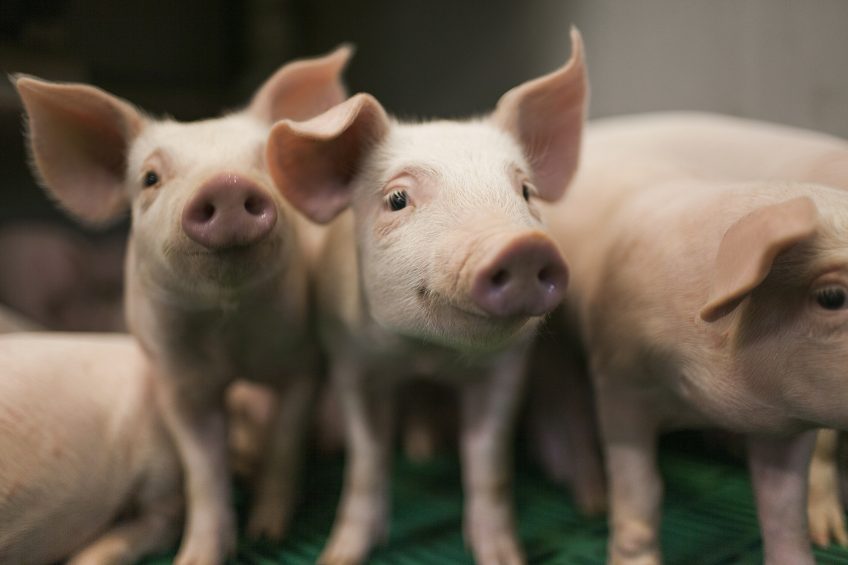Reducing antibiotic use in young animals

Studies show that many instances of diarrhoea in young animals are caused by nutritional shortcomings. This could be prevented by better selection and composition of the ingredients in the diet – with no use of antibiotics at all.
Faced with consumer and regulatory pressure, EU producers are now aiming to claim ‘no antibiotics ever’. Outside the EU, various definitions of antibiotic-free (ABF) production are in circulation. Reduced use, ionophores only, organic production with no antibiotics, ionophore coccidiostats, chemical anticoccidials or chemical antibacterials, such as sulphonamides, are among the approaches employed. ‘No antibiotics ever’ refers to animals raised without antibiotics in their feed and water and injections that include no ionophores, although they may still receive coccidiostats. This challenging production requirement demands that special attention is paid to bacteria control during hatching or weaning and healthy gut development. It also requires careful selection of high quality ingredients for young animal diets. Highly digestible ingredients are key to ensuring a low level of non-utilisable nitrogen in feed formulations and, therefore, play a major role in maintaining gut health, as they ensure fewer nitrogen components enter the large intestine.
Nutrients in piglet feed
An independent veterinary study in Denmark has shown that 50% of piglets diagnosed with diarrhoea had no identifiable pathogen. To a nutritionist, this is a direct indication that there is something wrong with the feed. Another part of the study showed that, out of 20 herds where 50% of piglets had infections and 50% did not, 70% of the piglets suffered from gut inflammation. This means something other than a bacterial toxin has caused the gut to become irritated and inflamed. In such cases, the level of nutrients in the feed must be checked – along with the quality of the raw materials that supply these nutrients.
Piglets with identifiable pathogens are negatively affected by nutrients that act as a substrate for these pathogens. For example, if the feed is high in non-protein nitrogen (NPN) and has low protein digestibility and/or a high level of trypsin inhibitors, then this will provide a substrate for the growth of pathogenic bacteria. Piglets with gut inflammation but no pathogens, on the other hand, may be influenced by other raw material components. Antigenic protein in the form of beta-conglycinin and haemagglutinins such as lectins, both present in soy, can damage and change the gut epithelia. This will reduce the absorption of nutrients from the gut and make more nutrients available to bacteria.
Use of highly digestible energy and protein sources in the feed formulation helps to resolve this by limiting the nutrients available to pathogens and, consequently, enhancing feed intake and supporting healthy piglet growth. Raw materials with the lowest content of anti-nutrients also reduce gut damage and optimise the ability of the piglet gut to absorb nutrients. Table 1 provides an overview of the nutrients and anti-nutrients in a range of soy raw materials. The addition of yeast or a raw material with a yeast component to the feed can contribute further to stable gut health.
Digestive capability of young broilers
Newly hatched chicks have an immature digestive system with a nutrient digestion capability up to 10-15% lower than that of older broilers. This means a suboptimal feed will result in an excess of nutrients in the hindgut, supporting microbial and parasite growth. To avoid this, it is important to consider the young broilers’ digestive capacity, the early establishment of microbiota and the timing for activation of digestive enzymes when formulating feed for ABF production.
Early in the post-hatch period, the concentration of pancreatic enzymes increases. Research results from Noy & Sklan show that amylase and trypsin concentrations increase considerably during the first 21 days. Protease activity, on the other hand, may not be sufficient in the early post-hatch period to hydrolyse exogenous and endogenous proteins – and may explain the poor protein digestion in the gut during the first few days after hatching.
Consequently, nitrogen digestion in the small intestine reportedly increases from 78% at day 4 to 92% at day 21 (Figure 1). If we add the effects of anti-nutrients such as trypsin inhibitors, protein digestibility will be aggravated. Young chickens have limited capacity to produce proteases and, therefore, will not be able to compensate the protease loss caused by trypsin inhibitors. The remaining enzyme activity in the gut will often be too low to ensure the breakdown of feed protein, which will then be lost and used as substrate for Clostridia, for example.
Another important aspect of ABF production is that feed formulations must be adjusted throughout the broiler’s lifespan to meet specific growth needs. Phase feeding – with more dietary phases than are currently offered – will ensure nutritional needs are more precisely met. An enzymatically treated soybean meal with reduced anti-nutritional factors can be a good approach for starter diets – as confirmed by a study that compared the use of a highly digestible protein in the starter diet with an AGP (Figure 2).
By choosing high quality feed ingredients with a minimal content of anti-nutritional factors, producers can ensure optimum nutrient digestibility and minimal damage to the gut environment. Numerous studies have already shown the benefits to young animal health, development and growth. While there will always be a need to treat some causes of diarrhoea, the use of antibiotics can be minimised through the use of best available technology – in this case, by using the best known raw materials.
References available on request






